Barbreck News

Thank You
Thank you to all families who contributed to the recent fundraising event led by Year 5 students, Mattea Demetriou and Scarlett Pringle in their quest to raise money to assist in research for Motor Neuron Disease.
Students supported the event well and we acknowledge the generosity of the community. Congratulations must go to Mattea and Scarlett for the superbly organised and determined manner in which they conducted the fundraiser.
A total of $1,000.05 was raised.
Salvation Army Appeal
We invite all families to join the Barbreck community and donate to the 2017 Salvation Army Appeal. Donations can be brought to Barbreck on Monday 4 and Tuesday 5 December. Details have been emailed to Barbreck families. Important points to remember have been indicated regarding the type of donations, including:
- Unwrapped toys/gifts for boys/girls (new items only)
- Tins of perishable food
- Gift cards
- No soft toys
Barbreck Music Concert 2017
Congratulations to all involved in last night’s annual Music Concert held in the Senior School Hall. The early applause from the appreciative audience was warmly welcomed by the performers.
The performance opportunity once again demonstrated the growing confidence of the girls as well as the delight and pride they gain in undertaking these events.
The standard of the Choral and Instrumental groups reflected the hard work committed by each professional who takes responsibility for the various groups. The pride felt by each performer was clearly evident during each item presentation, testament to the attention to detail – both musically and across all performance elements, invested into events such as this.
Special congratulations and thank you to Mrs Melissa Dods, Junior School Music Coordinator for her superb organisation and leadership of this special evening of music.
Each item was proudly presented by so many talented and committed professionals and we thank each of them for their excellent work.
A wonderful year of Music has been experienced in Barbreck in 2017. We thank parents for supporting all the important performance opportunities and events throughout the year.
Also, we warmly thank the Music Auxiliary who always demonstrate high interest and contribute to events and Music offerings with energy and commitment.
Ms Catherine Samuel
Deputy Head of Junior School
STEM Program
One of the greatest things about learning is it happens everywhere you go, not just inside the four walls of the classroom.
Our Barbreck girls are so fortunate to be learning and exploring through one of the most significant times in the history of the Junior School at St Catherine’s – witnessing and experiencing our new build. Taking full advantage of this real life experience is our STEM program for Years 3 and 4 students as they explore this space in a whole new way.
Learning often starts with a question and in STEM there usually is not a simple answer. Therefore, with the help of the principles of the Design Process students can begin to explore the millions of possibilities. Often referred to as a spiral learning process, the Design Process is reflective in nature as it cycles back to each stage as you discover new information. Scientists, engineers, mathematicians, artists and many more all use this Process as it facilitates critical and creative thinking.
The process starts with an open ended question or idea. This is called the Ask stage. Developing an understanding of what the question is asking, requires analytical and critical thinking. Once you have a comprehensive understanding of the question, you enter the second stage of the process, Imagine. Creative thinking is a must, as you list ideas and possible solutions. The careful analysis of ideas allows you to narrow down your thinking.
When you have reached a consensus in your thinking you are ready to enter the third stage, Plan. This is often the neglected stage as you are so engaged in the process you want to launch into creating it. Drawing pictures and talking to others helps to nurture your ideas. From here we move into Create and Improve, moving forwards and backwards between the two is vital as you test and revise your designs. This requires perseverance and resilience as often your first, or even second idea fails, but with flexible thinking you will achieve your goal.
Finally, you Present. This is an extensive learning process that takes time, but is so valuable, which is why it is what we use in everything we do in STEM. It strengthens our thinking and builds important skills in contemporary learning.
-
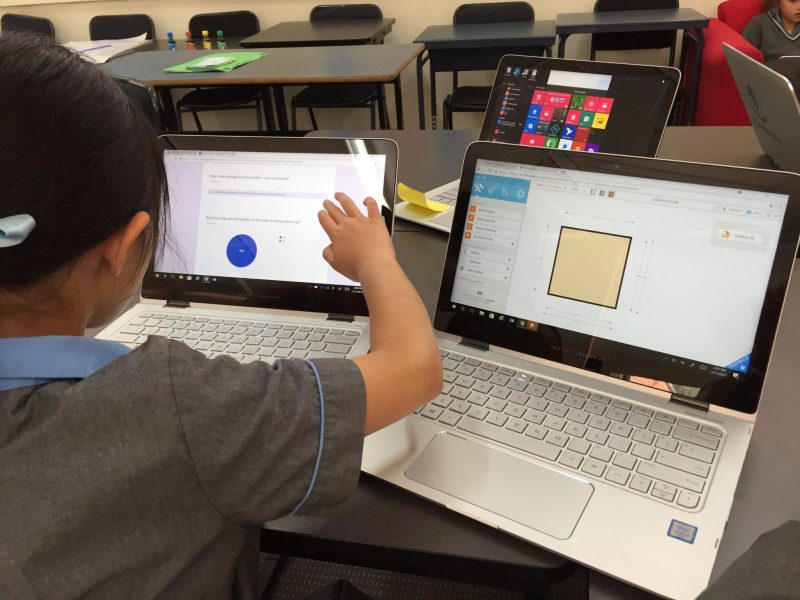
Natalie multitasking with her survey data and design
-
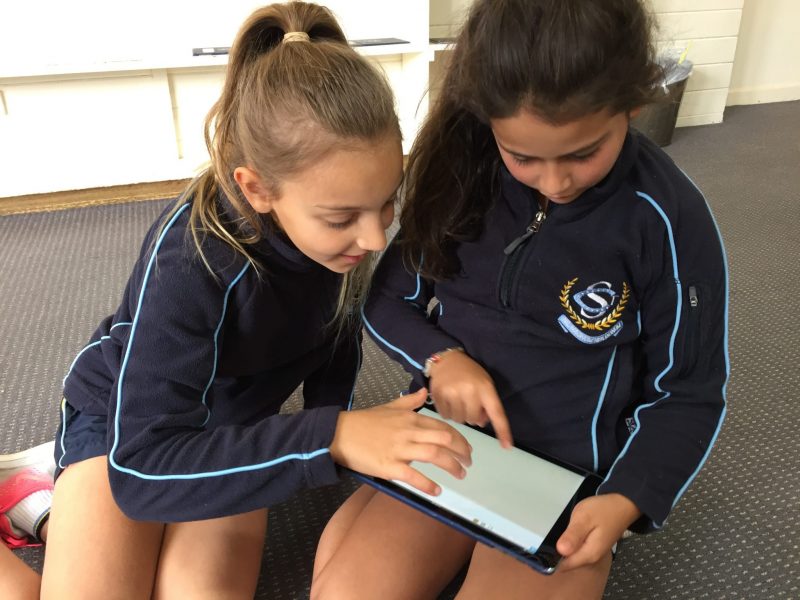
Palom and Hollie using Floorplanner to create their room
-
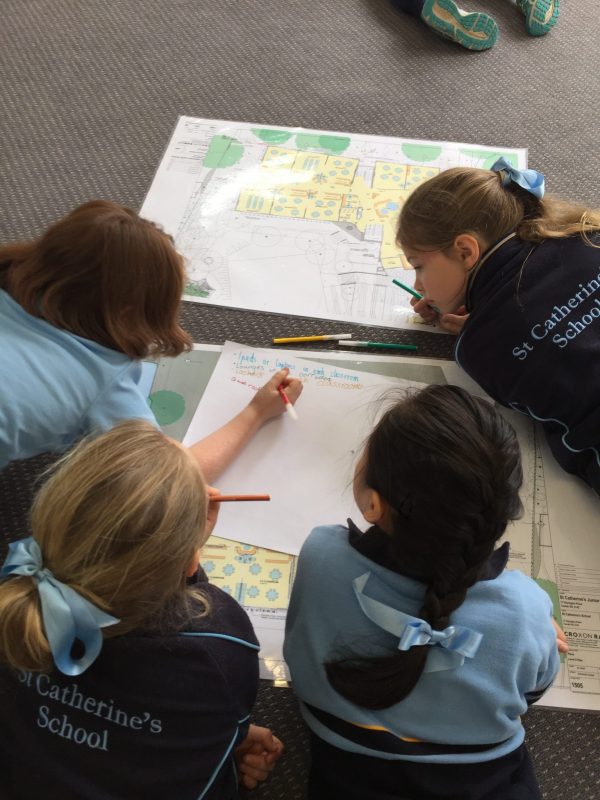
Year 3 girls examining the building plans
-
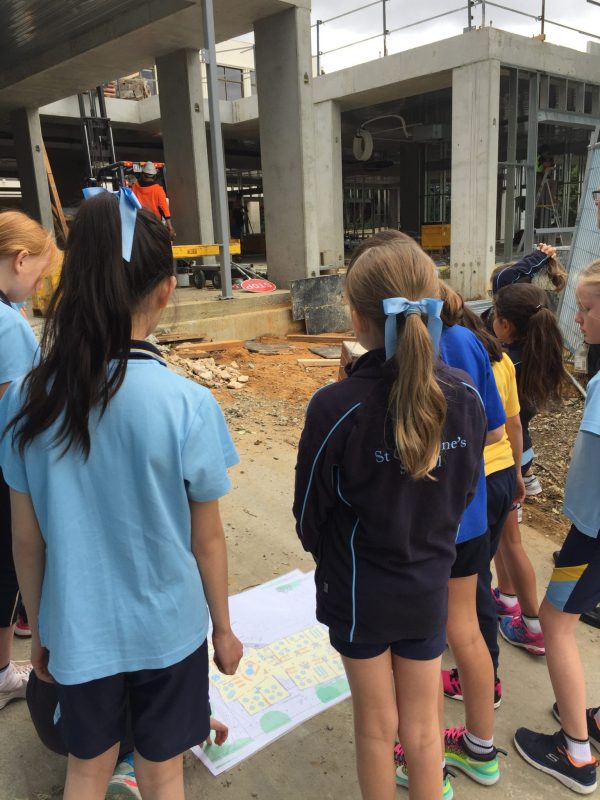
Year 3s looking at the building site
-
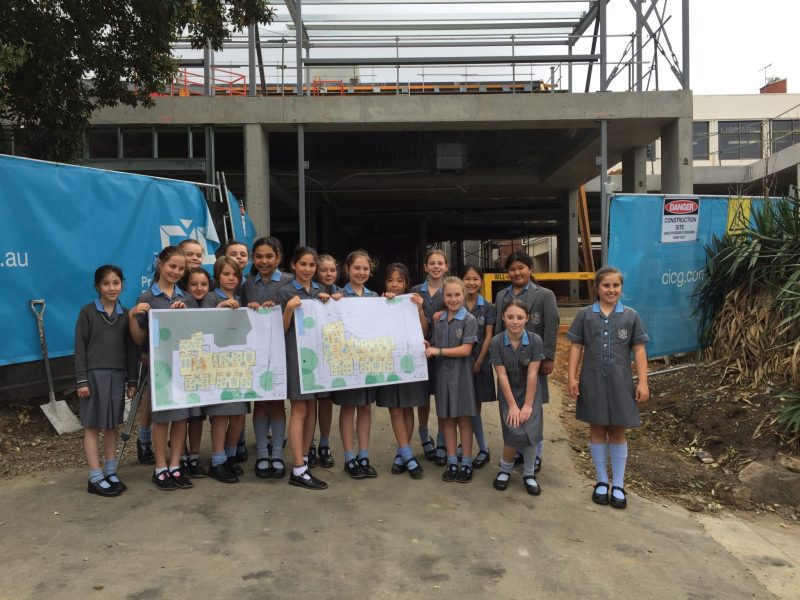
4SB comparing the building site with the current plans
Students have been using the Design Process in our examination of the new Junior School build. Our learning journey commenced with the questions ‘What does the internal space look like?’ and ‘How can we design a space for all of the different learning needs in Barbreck?’
Following the Design Process, students explored the building plans and site, gaining an understanding of what the space will include. The Imagining stage allowed students to develop some very creative suggestions of what could be included in the new Junior School. Some of the ideas included Apple TVs, nail salons, and even a bounce room!
Using these ideas, students selected a space within the new build, such as the Library, French, Art, STEM and of course most importantly the Staff Room. Students carefully considered the individual needs of each space, and worked collaboratively to develop an online survey. These surveys included questions for a specific staff member about what they want and need in their new space. Staff generously gave up their time to answer these extensive surveys.
Students have found that even at the Planning stage they already have had to go back and ask more questions! Over the coming weeks students will begin to analyse the collated data and design each individual space using a range of online floor planning tools. Students will create a digital representation of our new Junior School. Who knows, perhaps there will be room for a nail salon?
Stay tuned to see what we design!
Miss Alyssa Flint
Year 5F Teacher
‘Learn to read’ – ‘Read to learn’
Over the past few months there has been quite a bit of media coverage regarding the introduction of a Year 1 Phonics check being introduced across Australian schools, to identify students that may be falling behind at an early stage in their literacy development. In turn, this has given rise to debate about the role of phonics in learning to read, and the need for another national assessment, particularly at such a young age.
Reading involves making sense of print and constructing meaning from written language, and draws upon many skills that need to be developed at the same time. In the Junior School our goal is for students to build strong foundations as they ‘learn to read,’ so that in turn they can transfer and apply these skills to ‘read to learn’.
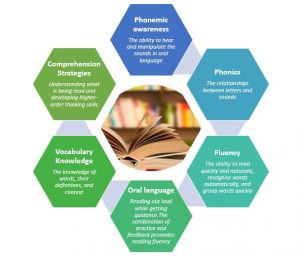 Research has clearly shown that for students to be successful readers it is essential that they develop strong foundations in phonics. In the Junior School, we use explicit, sequential, systematic and multisensory phonics programs to build these foundations. We also regularly assess each student using a number of different formative, diagnostic and standardised assessments – carefully monitoring progress and identifying any students who may be having difficulty. Students who are identified as requiring further support work closely with the Learning Plus department in small-group or one-on-one programs.
Research has clearly shown that for students to be successful readers it is essential that they develop strong foundations in phonics. In the Junior School, we use explicit, sequential, systematic and multisensory phonics programs to build these foundations. We also regularly assess each student using a number of different formative, diagnostic and standardised assessments – carefully monitoring progress and identifying any students who may be having difficulty. Students who are identified as requiring further support work closely with the Learning Plus department in small-group or one-on-one programs.
The proposed Year 1 Phonics Check would be conducted orally and one-on-one with the classroom teacher. As we already assess and carefully monitor students’ development from Prep onwards, this assessment would not be anything new to Junior School teachers or students. However, we would need to consider carefully how the addition of the Year 1 Phonics assessment would fit with our current assessment practices. It may potentially replace an assessment we are already using so as not to ‘over test’ or it could provide us with one more measure to ensure we are identifying the individual needs of every student. This will be looked at closely if the initiative is implemented nationally.
In addition to the explicit and systematic teaching of phonics in the early years, the Junior School Reading program from Prep through to Year 6 incorporates:
- Guided and reciprocal reading sessions that focus on fluency and comprehension
- Explicit and sequential programs that focus on building core comprehension strategies
- Many opportunities throughout the year for oral language development through reading groups, listening and speaking activities and public speaking
- Building of general and subject specific vocabulary through classroom Units of Investigation and Specialist classes
- Spelling programs that also focus on phonemic awareness and phonics through an explicit and systematic approach
- Developing a love of literature through exposure to good literature and the Library program.
Our goal is to build strong foundations and foster a love of reading in every student. From the words of Dr Seuss, ‘The more that you read, the more things you will know. The more that you learn the more places you will go’.


